Perhaps the most exciting achievement at Waulinbakh Wildlife Sanctuary to date has been the extensive biodiversity monitoring conducted as part of the sanctuary’s inaugural Ecohealth program, utilising traditional observational methods together with remote-monitoring survey methods (camera traps and bioacoustic monitors) and trialling the cutting-edge technique of airborne DNA sampling. The monitoring is providing crucial baseline data against which the impacts of Australian Wildlife Conservancy’s (AWC) work can be quantified over time, guiding management activities and informing ongoing conservation objectives to maximise outcomes for biodiversity.
While data from these inventory surveys is still being analysed, preliminary results are extremely encouraging, with more than 160 species already confirmed on sanctuary.
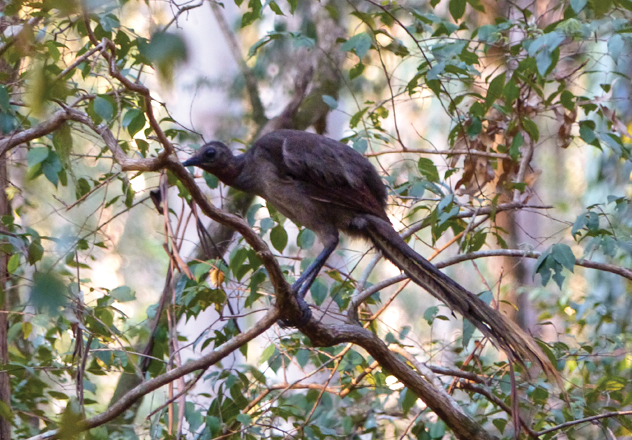 Brad Leue/AWC
Brad Leue/AWC
Superb Lyrebird (Menura novaehollandiae)
The Superb Lyrebird is famously an expert imitator. Along with their own territorial calls and whistles, the species is capable of mimicking almost any noise in their environment, particularly the sounds of other native birds. Superb Lyrebirds have powerful legs and long toes and claws that rake through soil and leaf litter to feed on insects, worms, spiders, seeds and other small invertebrates. The male has an ornate tail of spectacular curved feathers. Possessing short, rounded wings, the Superb Lyrebird is a predominantly ground-dwelling species but will take to trees at night to roost. This is the only AWC sanctuary or partnership area that Superb Lyrebirds occur on and confirming their presence adds the species to the percentage of birds AWC protects nationally.
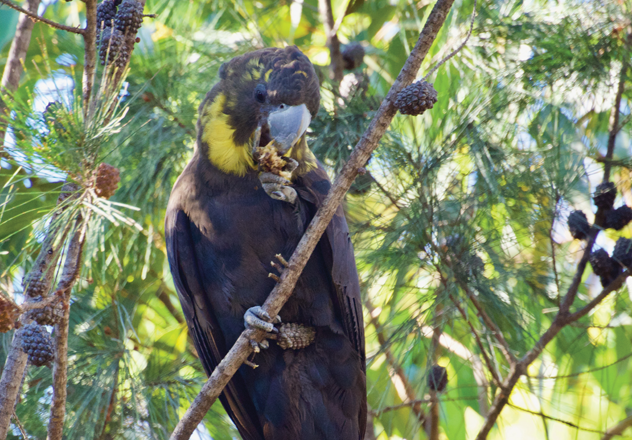 Joey Clarke/AWC
Joey Clarke/AWC
Glossy Black-Cockatoo (Calyptorhynchus lathami)
The smallest of the black-cockatoos, Glossy Black-Cockatoos feed exclusively on the seeds of she-oaks (Allocasuarina). Perched quietly in groups of two or three, the first sign these birds are near is often the click-click sound of their beaks as they crack open the woody seed cones and drop discarded debris to the ground. Adults are brownish-black, males with a flash of red in the tail feathers, while females have irregular blotches of yellow on their head and bars of orange-red in their tail. Like many Australian birds, Glossy Black-Cockatoos require forest with large, mature trees with hollows to use as nesting sites – like the habitat found at Waulinbakh. Around 38% of the range of Glossy Blacks in south-eastern Australia was burnt in the 2019–20 Black Summer fires, which destroyed and damaged nest hollows and killed fire-sensitive she-oaks on which they depend for food.
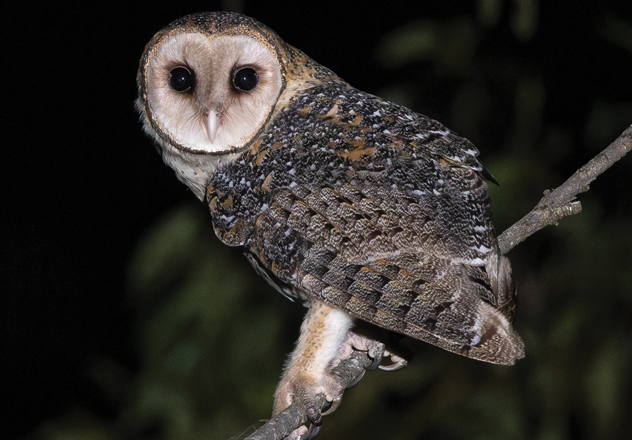 Brad Leue/AWC
Brad Leue/AWC
Masked Owl (Tyto novaehollandiae)
The Masked Owl is a nocturnal hunter which preys mostly on small mammals like mice, rats, bandicoots, and antechinus; supplemented occasionally with possums, gliders and birds. They hunt mainly by sound, their impressive facial disc functioning like a satellite dish to pick up and focus on the faintest rustles in the undergrowth. Masked Owls are among the largest in the barn owl family. They can be distinguished by their thickset feathered legs; bulky, hunched posture; and dark, mottled and speckled plumage. They depend on large hollows in which to nest, and prefer to hunt along the gradient between closed and more open forest habitats. The presence of this species at Waulinbakh is likely a reflection of a high density of terrestrial mammals.
 Brad Leue/AWC
Brad Leue/AWC
New England Leaf-tailed Gecko (Saltuarius moritzi)
At up to 20 centimetres long, leaf-tailed geckos are some of the largest Australian geckos. These nocturnal lizards are masters of camouflage. Their roughly textured skin perfectly matches the lichen-covered boulders and tree trunks where they cling, face-down, waiting in ambush for unsuspecting crickets or arthropods to eat. This species was only described in 2008, and lives in forest habitats in New South Wales between the Hunter River and the Clarence River. Large, old trees and fallen hollow logs form important habitat for this gecko. At the time of writing, the New England Leaf-tailed Gecko is under assessment to be listed as Endangered; approximately 44% of its range was burnt in the 2019–20 Black Summer fires, and it is also likely threatened by feral predators.
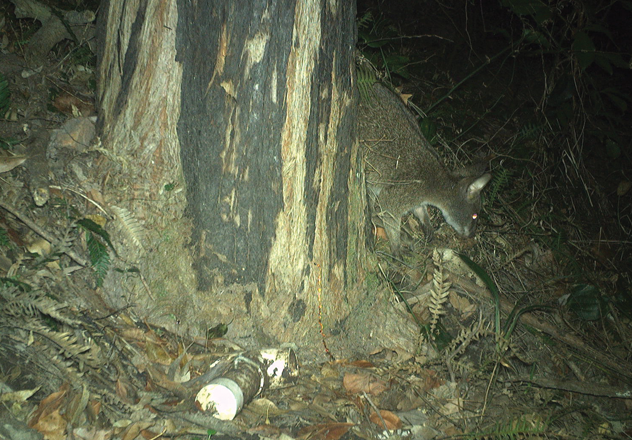 AWC
AWC
Parma Wallaby (Notamacropus parma)
The Parma Wallaby is a generally solitary marsupial and the smallest known member of the Notamacropus genus, with grey-brown fur, a dark dorsal stripe and a light grey belly and chest. A rare and highly cryptic species endemic to New South Wales, the Parma Wallaby is patchily distributed and was once believed to be extinct until being rediscovered in the late 1960s. The species prefers to live in wet sclerophyll forest with dense understorey and nearby grassy areas. Parma Wallabies are largely nocturnal, spending their days resting amongst shrubby vegetation before emerging in the evening through worn runways to feed near the edge of clearings. The detection of the Parma Wallaby on sanctuary is major news for the species, which was recently listed as Vulnerable. AWC’s core conservation land management activities will deliver critical recovery actions to support the persistence of this threatened marsupial.
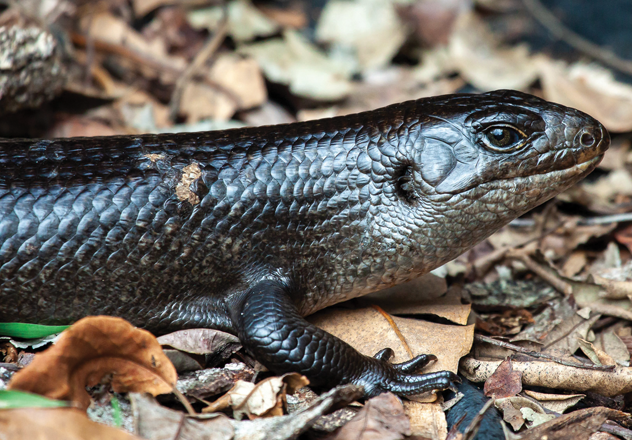 Craig Robbins/iNaturalist
Craig Robbins/iNaturalist
Land Mullet (Bellatorias major)
The Land Mullet takes home the trophy as Australia’s largest skink. This robust reptile can grow up to 60 centimetres in length, making it one of the largest skink species in the world. Elusive and shy, the Land Mullet is notoriously difficult to spot, seeking shelter in fallen logs or in burrows amongst fallen tree root systems. The species is omnivorous, feeding on berries, fungi, seeds, fruits and insects. Land Mullets are live-bearing reptiles with prolonged parent-offspring association, often living in small family groups. With glossy black scales, these skinks are diurnal heliotherms, spending long periods of the day basking in patches of sunlight to achieve a body temperature of around 30°C. Given the skink’s potential vulnerability to predation from feral cats and foxes, the management of invasive predators at Waulinbakh will be essential to safeguarding the species here.
Read or download this full issue of Wildlife Matters here.
Your donation can support the removal of invasive weeds that suffocate native plants and limit food resources for wildlife.
Donate now